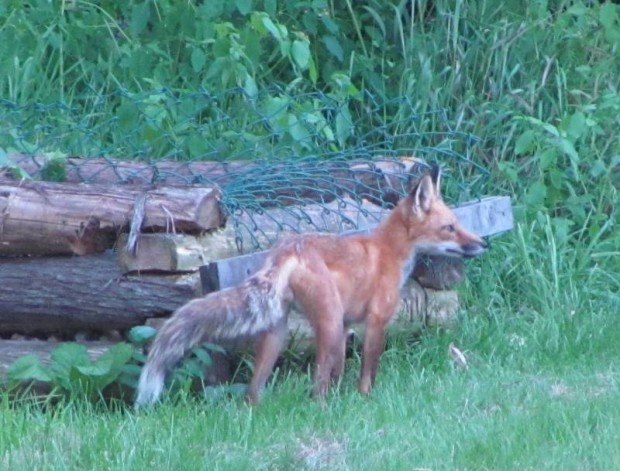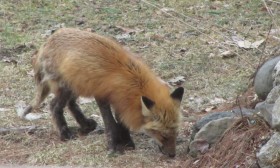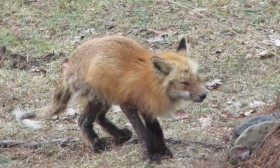The average weight of a male red fox is about 12 lbs; females are slightly smaller. They become sexually mature at 10 to 11 months. They breed annually from December through March. The average litter, born during March and early April, contains 5 pups. Both parents take part in raising the pups. Family groups stay intact until mid-September, when pups begin to disperse.
Males generally disperse twice the distance of females, commonly moving 20-40 miles before settling in new territories. Factors affecting home range size (from 6 to 12 square miles) include food abundance, degree of competition, type and diversity of habitat, and natural and physical barriers. Home ranges of males clearly overlap those of at least 1 or more females.
Red fox travel much of their range each night. They are omnivorous with seasonal variation in diet. Small rodents and other small to mid-sized mammals are consumed year round. Additional spring foods include grasses, birds and bird eggs. Fox rely heavily on a variety of fruits and some insects during the summer; apples, in the fall; small rodents, snowshoe hare, and frozen apples, in winter.
They fox live up to 5 years in the wild. Leading causes of death include trapping, hunting, road kills and occasionally, bobcats or coyotes. Rabies and sarcoptic mange can substantially decrease local populations. Rabies becomes almost 100% fatal once the symptoms appear.
Sarcoptic mange is transmitted among fox by mites, and their communal denning behavior may be an important factor in its spread. Mange is density dependent, and outbreaks usually occur when local fox populations become too great for the habitat.
Sarcoptic mange, can cause severe itching, crusting and inflammation of the skin (as on the nose of the fox below). A highly contagious disease, it is mostly transmitted by direct contact. The mite does not survive off the host (fox) for more than a few days. Human infection, called “scabies,” usually goes away in healthy individuals without treatment. Young or weak animals are more susceptible because their immune systems are not at full strength.
The best habitat for red fox consists of a mixture of wooded and non-wooded land with adjacent waterways. Non-wooded habitat of active and idle agricultural lands are often adequate. Clear cutting of dense forests provides mixed open space that expands the habitat. Fox breed as juveniles, and populations can quickly rebound from large decreases from disease.
Additional resources
Caron, Mark. “Red Fox Assessment.” Augusta, Me. Maine Department of Inland Fisheries and Wildlife. May 2, 1986. http://www.state.me.us/ifw/pdfs/species_planning/mammals/redfox/speciesassessment.pdf (accessed April 29, 2014) [Portions of the original text have been condensed and edited.]
Tufts University. Cummings School of Veterinary Medicine. Wildlife Medicine Program. “Red Fox.” http://vet.tufts.edu/wildlife/Interesting_Fox.html (accessed April 29, 2014)




